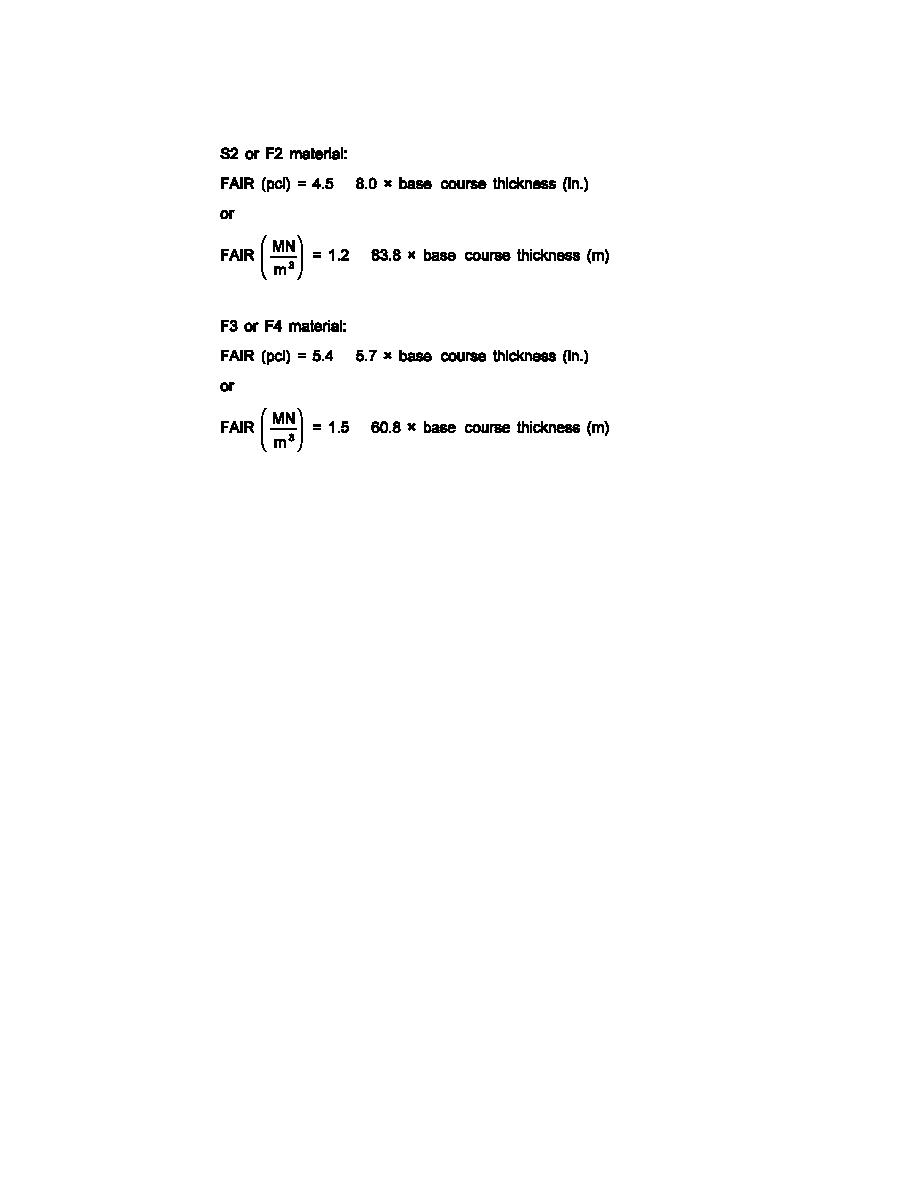
UFC 3-260-02
30 June 2001
%
&
(20-2)
%
&
%
&
(20-3)
%
&
The FAIR values for the S1, and F1 to F4 subgrade soils were determined from field measurements
and are the weighted average k values for an annual cycle. These values cannot be determined
from plate bearing tests.
(1) It is good practice to use a combined base thickness equal in thickness to the slab.
The design procedure is as follows:
(a) Determine frost group soil classification of subgrade, Table 20-1.
(b) Assume three combined base thicknesses, enter Figure 20-1 or use appropriate
equations, determine the FAIR value for each thickness.
(c) Use the FAIR values with appropriate design curves to determine pavement
thickness.
(d) Plot combined base thickness and pavement thickness. From the figure, pick out
base-course and pavement thickness of similar values.
(e) If unable to converge to a solution, repeat steps b to d with new base-course
thickness.
(f) A minimum of 203 millimeters (8 inches) of combined base (100-millimeter (4-inch)
drainage layer plus 100-millimeter (4-inch) separation layer) is required for rigid pavements in frost
areas.
(2) The combined base must meet the drainage and filter requirements outlined in EI
02C202/AFJMAN 32-1016. A 100-millimeter (4-inch) separation layer meeting the filter
requirements must be placed between the subgrade and base or subbase course. A geotextile
separator can also be used in lieu of the granular filter. No structural advantage will be attained in
the design when a geotextile is used. Guidance for selection of geotextile fabric materials
20-6



 Previous Page
Previous Page
